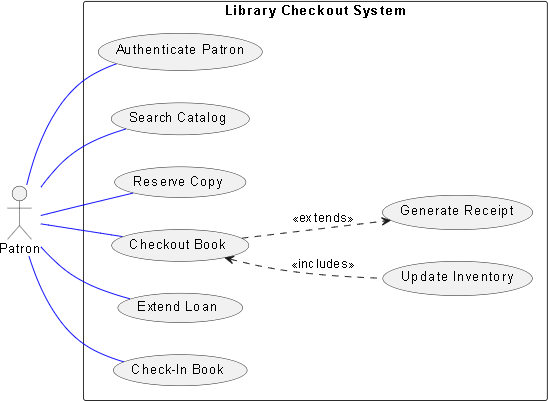Now Reading: What Is a Use Case? A Simple Guide for Beginners
-
01
What Is a Use Case? A Simple Guide for Beginners
What Is a Use Case? A Simple Guide for Beginners
Think about a use case as a story. It’s a way to describe how a person (or something else) interacts with a system to achieve a specific goal. This simple concept is one of the most powerful tools in software development because it helps everyone stay on the same page.
The Core Parts of a Use Case
Every use case has a few key ingredients:
Actors
This is the “who.” An actor is a user or anything else outside the system that interacts with it to get something done.
Goals
This is the “what.” It’s the specific outcome the actor wants to achieve. A good use case always has a clear goal.
Steps
This is the “how.” It’s the sequence of actions and interactions between the actor and the system to reach the goal.
A Simple Example: Checking Out a Library Book

Let’s apply these concepts to a familiar task.
Actor: The Library Patron.
Goal: To successfully check out a book.
Main Flow (Steps):
- The Library Patron takes a book and their library card to the circulation desk.
- The Librarian scans the book’s barcode.
- The Librarian scans the Library Patron’s card.
- The system checks if the patron’s account is active and if they have overdue books.
- The system updates the book’s status to “checked out” and assigns a due date.
- The Librarian tells the Library Patron the due date.
Alternative Flow (What if…):
What if the patron has an overdue book? The system would display an alert, and the librarian would ask the patron to return the book first.
Why Use Cases Matter
Use cases are all about communication. They create a clear, shared understanding between the people who want the software and the people who build it (the developers). By writing down the story of how the system is used, you can make sure everyone is working towards the same goal.
A Simple Tip for Writing Your Own
Focus on one goal per use case.
Trying to describe too many goals in one use case can make it confusing. Keep it simple and focused. For example, “Checking Out a Book” is one goal, while “Returning a Book” or “Renewing a Book” would be separate use cases.

